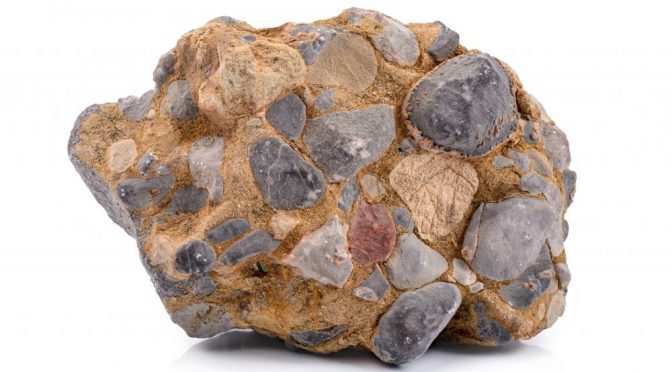| Class: | S.5E (19) |
| Name: | Mak Ting Hei |
| Year: | 2017 – 2018 |
| 地質年代:(化石) (岩石)
化學組成, 鍵及結構:(礦物) |
Geological Age: (Fossil) (Rock)
Chemical composition, bonding and structure: (Mineral) |
| 形成:
礫岩是由其他岩石顆粒通過風化和土壤侵蝕形成的,它們分解成小碎片並向下移動,例如顆粒狀,鵝卵石,鵝卵石和巨石。 顆粒通過沉積和岩石化形成礫岩。 |
Formation:
Conglomerate is formed from other particles of rocks by weathering and soil erosion which break down into small fragments and move downhills, for example, granular, pebbles, cobbles and boulders. And the particles form conglomerate through deposition and lithification. |
| 特性:
礫岩是一種粗粒碎屑沉積岩,由圓形至礫石狀的碎屑組成,例如顆粒,卵石,鵝卵石和巨石。 |
Properties:
Conglomerate is a coarse-grained clastic sedimentary rock that is composed by rounded to subangular gravel-size clasts, e.g., granules, pebbles, cobbles, and boulders. Conglomerate forms by particles larger than 2 mm. |
| 用途:
礫岩可以用於室內使用,如裝飾聚合物,地磚和家庭; 外牆使用如建築石材,例如裝飾石材,園林裝飾,辦公樓和屋頂瓦; 還有其他建築用途,如遏制; 對建築業而言,它被用作尺寸石,水泥製造和路面石; 它也用於古代,例如文物,紀念碑,雕塑,小雕像; 用於商業用途,墓地標記,含水層和墓碑。 |
Application: Conglomerate can be used for interior uses such as decorative aggregates, floor tiles and homes; Exterior uses like building stone, as facing stone, garden decoration, office buildings and roof tiles; And also other architectural uses, like curbing; For construction industry, it is used as dimension stone, cement manufacture, and roadstone; It is also used for antiquity, for example, artifacts, monuments, sculpture, small figurines; For commercial uses, cemetery markers, in aquifers, and tombstones. |
| 分佈:
礫岩能而中國,印度,哈薩克斯坦,蒙古,俄羅斯,烏茲別克斯坦等亞洲國家找到;而在歐洲,則有奧地利,丹麥,德國,英國,荷蘭,挪威,波蘭,瑞典,瑞士,英國等等。 |
Distribution:
Conglomerates can be found throughout the whole world and deposits in China, India, Kazakhstan, Mongolia, Russia, Uzbekistan which are in Asia, and Europe, such as Austria, Denmark, Germany, Great Britain, Netherlands, Norway, Poland, Sweden, Switzerland, United Kingdom, etc.. |
| 知多一點點:角礫岩與礫岩之間有什麼不同?
他們是非常相似的岩石。它們都是由直徑大於2毫米的顆粒組成的碎屑沉積岩。它們之間的區別在於大顆粒的形狀。 在角礫岩中,大顆粒呈角形,但在礫岩中,顆粒呈圓形。
|
More to learn: What is the difference between Breccia and conglomerate?
They are very similar rocks. They are both clastic sedimentary rocks composed of particles larger than 2 mm in diameter. The difference between them is the shape of the large particles. In breccia, the large particles are angular in shape, but in conglomerate, the particles are rounded.
|
